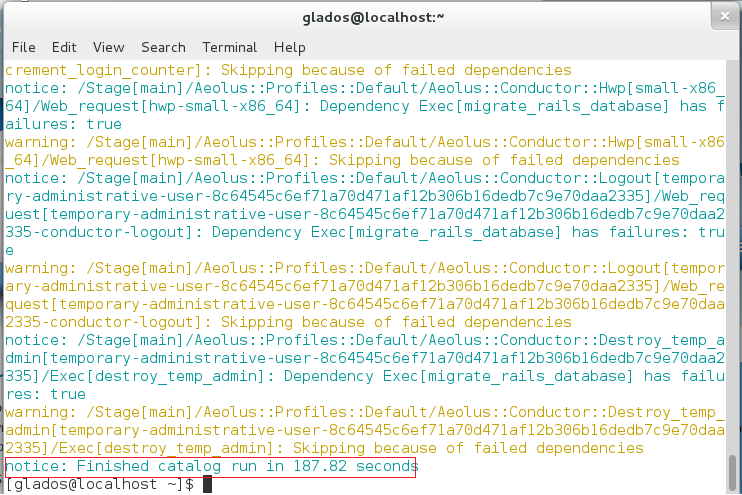No edit summary |
No edit summary |
||
| Line 1: | Line 1: | ||
== How to install Aeolus-GUI == | == How to install Aeolus-GUI == | ||
Aeolus is a | Aeolus is a cloud management platform for Fedora. With Aeolus, you can run and deploy virtual machines locally as well as with cloud service providers. Aeolus is free and open source, and it is mostly written in the language Ruby. Aeolus-GUI is a graphical desktop client that makes it more familiar to use. | ||
=== Step 1. Install Aeolus === | === Step 1. Install Aeolus === | ||
Aeolus-GUI currently requires a local instance of Aeolus. Remote support is not supported yet. | Aeolus-GUI currently requires a local instance of the Aeolus conductor. Remote support is not supported yet. | ||
If you haven’t insalled aeolus, type in the following terminal command: | If you haven’t insalled aeolus, type in the following terminal command: | ||
| Line 22: | Line 22: | ||
[[File:Aeolous-GUI-Documentation-1.png]] | [[File:Aeolous-GUI-Documentation-1.png]] | ||
=== Step 3. Building aeolus-gui === | |||
Aeolus-gui currently requires git (this is used to clone the source of aeolus-gui) and qt-devel (Qt is a graphical UI framework, devel is the development version). Install those two with the following command: | |||
sudo yum install git qt-devel | |||
[[File:Aeolos-GUI-Documentation-2.png]] | |||
After installing the dependencies, use git to clone the latest source: | |||
git clone http://github.com/niteshnarayanlal/Aeolus-gui.git | |||
This will create a folder called Aeolus-gui. Navigate to that folder with the cd command. | |||
cd Aeolus-gui | |||
Revision as of 05:37, 12 December 2012
How to install Aeolus-GUI
Aeolus is a cloud management platform for Fedora. With Aeolus, you can run and deploy virtual machines locally as well as with cloud service providers. Aeolus is free and open source, and it is mostly written in the language Ruby. Aeolus-GUI is a graphical desktop client that makes it more familiar to use.
Step 1. Install Aeolus
Aeolus-GUI currently requires a local instance of the Aeolus conductor. Remote support is not supported yet.
If you haven’t insalled aeolus, type in the following terminal command:
sudo yum install aeolus-all
Follow all on-screen prompts - such as entering your password, typing Y and then enter to confirm the installations..
Step 2. Configure Aeolus
After installing Aeolus successfully, type in the following command:
sudo aeolus-configure
This is the Aeolous Recipe. It configures Aeolus with a set of default settings, and sets it up so it can be used with Amazon EC2. No user input is required, and you will get quite a bit of text output which is normal.
Step 3. Building aeolus-gui
Aeolus-gui currently requires git (this is used to clone the source of aeolus-gui) and qt-devel (Qt is a graphical UI framework, devel is the development version). Install those two with the following command:
sudo yum install git qt-devel
File:Aeolos-GUI-Documentation-2.png
After installing the dependencies, use git to clone the latest source:
git clone http://github.com/niteshnarayanlal/Aeolus-gui.git
This will create a folder called Aeolus-gui. Navigate to that folder with the cd command.
cd Aeolus-gui

